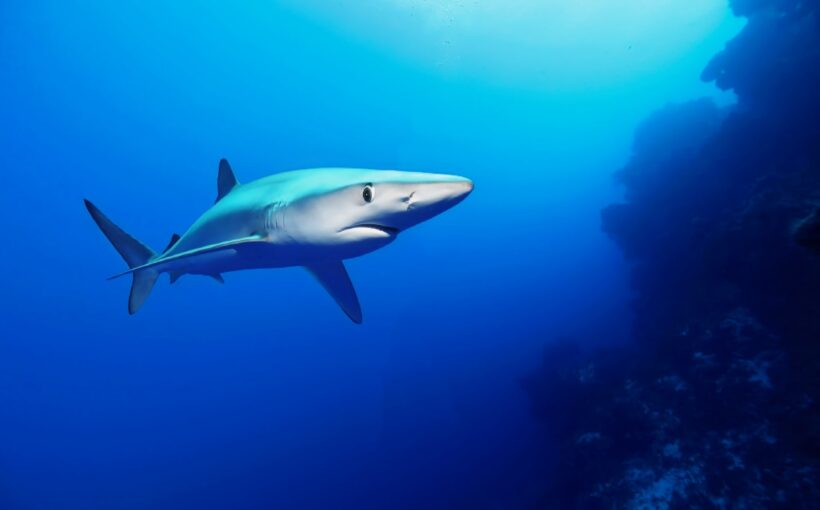
It was 1984, and a hot tropical sun beat down on the inky blue depths of the Huon Gulf, a large inlet of the Solomon Sea just off the coast of Papua New Guinea. Suddenly, the peace was broken by the scream of a fishing reel as a four-metre-long blue marlin (Makaira mazaraburst) burst from the water.
For the next hour the giant fish surged, leapt and tail walked, as my best friend and fishing companion mostly just held on. Then, suddenly, it was gone.
The trace had frayed. No fishermen likes to lose a fish, but for me, there was also a sense of relief that it had got away. That fish was the most magnificent creature I’d ever seen, and that moment helped inspire my lifelong career in marine biology.
Recreational fishing for the largest species and individual fish in the sea like this is often called trophy fishing. Anglers seek to set new size records, either overall or using particular line strengths. These can be incredible specimens – the largest marlin ever caught weighed over 700kg, similar to a small car.
What’s the catch?
In a new paper, we analysed 80 years of trophy fishing world records, using data recorded by the International Game Fishing Association (IGFA) to reveal some intriguing trends. Notably, in the 1950s, the average record-holding fish weighed a hefty 168kg, but this figure fell drastically to just 8kg in the 2010s.
The fish are not shrinking, instead anglers are now targeting a broader range of smaller species. However, this might signal a concerning decline in the population of larger fish species.
There has also been a noticeable expansion of trophy fishing worldwide. While the US dominated the scene historically, recent decades have seen an uptick in records from regions like Japan and New Zealand.
This global spread offers potential social and economic benefits to these new areas, but also raises concerns about increased fishing pressure on local fish populations that were previously less targeted.
Perhaps our most significant observation was the sharp decline in new records for fish species listed as threatened with extinction by the International Union for Conservation of Nature. Comparing the last decade (2010–2018) to the 2000s, there has been a roughly 66% decrease in records for these at-risk species.
This trend could indicate a growing awareness towards conservation issues in trophy fishing or could reflect the worrying reality of diminished populations of these species. The exact implications of this trend are yet to be fully understood.
Trophy fishing is controversial. Some people will never be fans. The largest fish in the ocean are often the most productive breeders, so catching and killing them, especially threatened species, doesn’t make sense. However, while world record fish accredited by the IGFA gain the spotlight, they account for a very small number of fish in total.
Much more concerning are the fishing tournaments that offer highly lucrative prizes for landing the largest and most fish and sharks in a given period of time.
Tackling sustainability
Trophy fishing, and sport fishing in general, is changing to become more sustainable, and even a force for good. In 2011, the IGFA introduced the “all-tackle length” category. This approach records the length of the fish rather than weight, enabling it to be released without needing to kill it.
The Shark Angling Club of Great Britain has been releasing all sharks for decades and the British Record Fish Committee recently decided to only allow length-based records for large sharks, with fish having to be measured while still in the water. Although releasing fish does not guarantee survival, that can be maximised by using the right gear and careful handling. Such approaches should become mandatory for all trophy anglers.
Anglers dedicate extensive time to their passion, developing a wealth of knowledge about the fish they catch. Harnessing this expertise is crucial for better estimating the extent of trophy fishing and increasing knowledge of fish stocks in general.
In the UK, anglers and scientists are working together through initiatives such as Shark Hub UK and Project Pollack to gather catch data, collect samples and tag fish.
This approach not only aids conservation efforts but also aligns with the anglers’ interest in maintaining healthy fish populations for the future. After all, the recreational fisheries are not only a source of livelihood but also contribute to the mental and physical wellbeing of those who engage with them.
Nearly 40 years after that experience in Papua New Guinea, I marvelled at huge schools of giant fish off the coast of southern England last summer. These Atlantic bluefin tuna (Thunnus thynnus) have had a remarkable recovery around the coast, most likely due to a combination of improved management and changing environmental conditions.
From this year, the UK government has authorised a catch and release only recreational fishery for these fish. With continued careful management this should bring exciting angling, social and economic benefits for years to come.
![]()
Bryce Stewart receives funding from Defra and UK Research and Innovation. He is a member of the Marine Conservation Society and the Yorkshire Wildlife Trust and sits on the Marine Stewardship Council Stakeholder Advisory Council.
James Boon does not work for, consult, own shares in or receive funding from any company or organisation that would benefit from this article, and has disclosed no relevant affiliations beyond their academic appointment.



